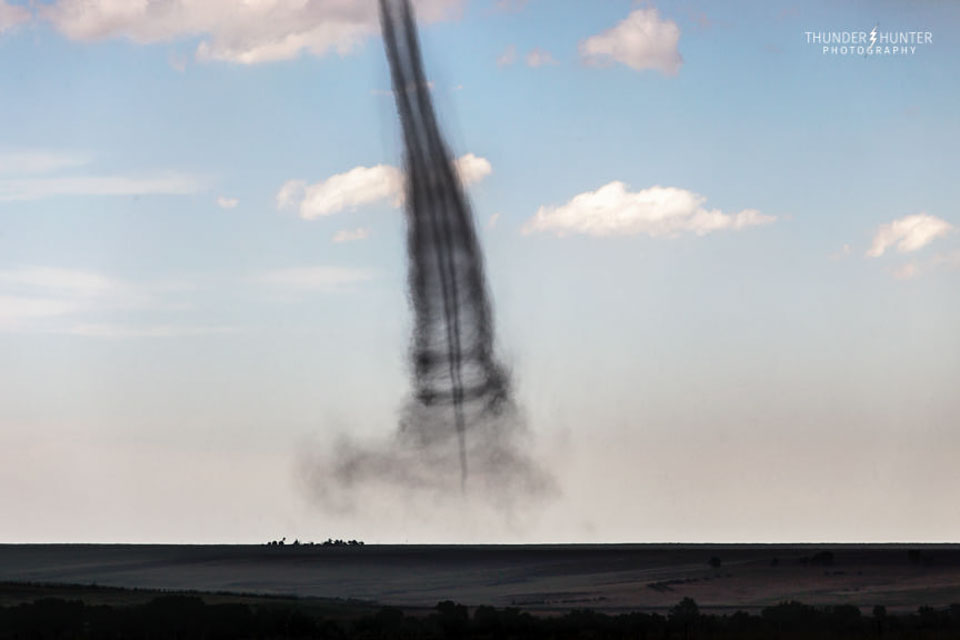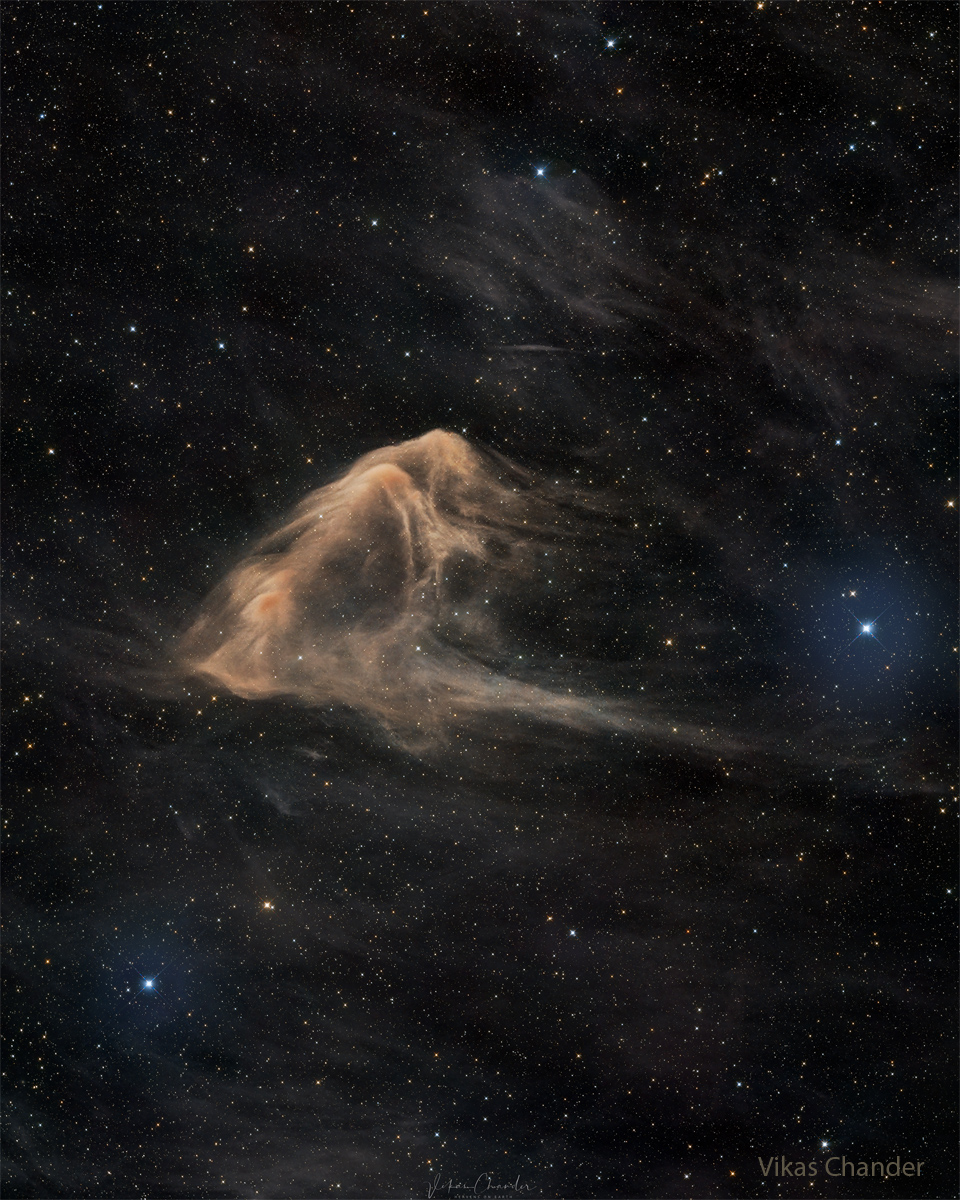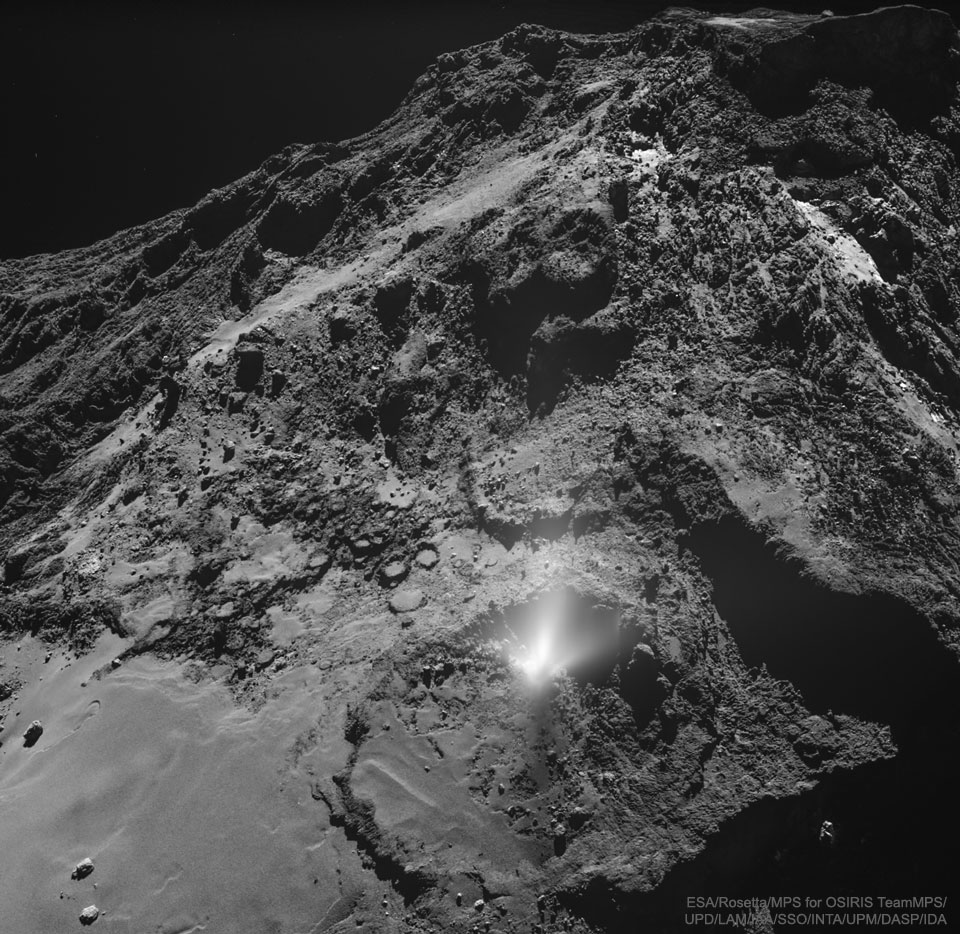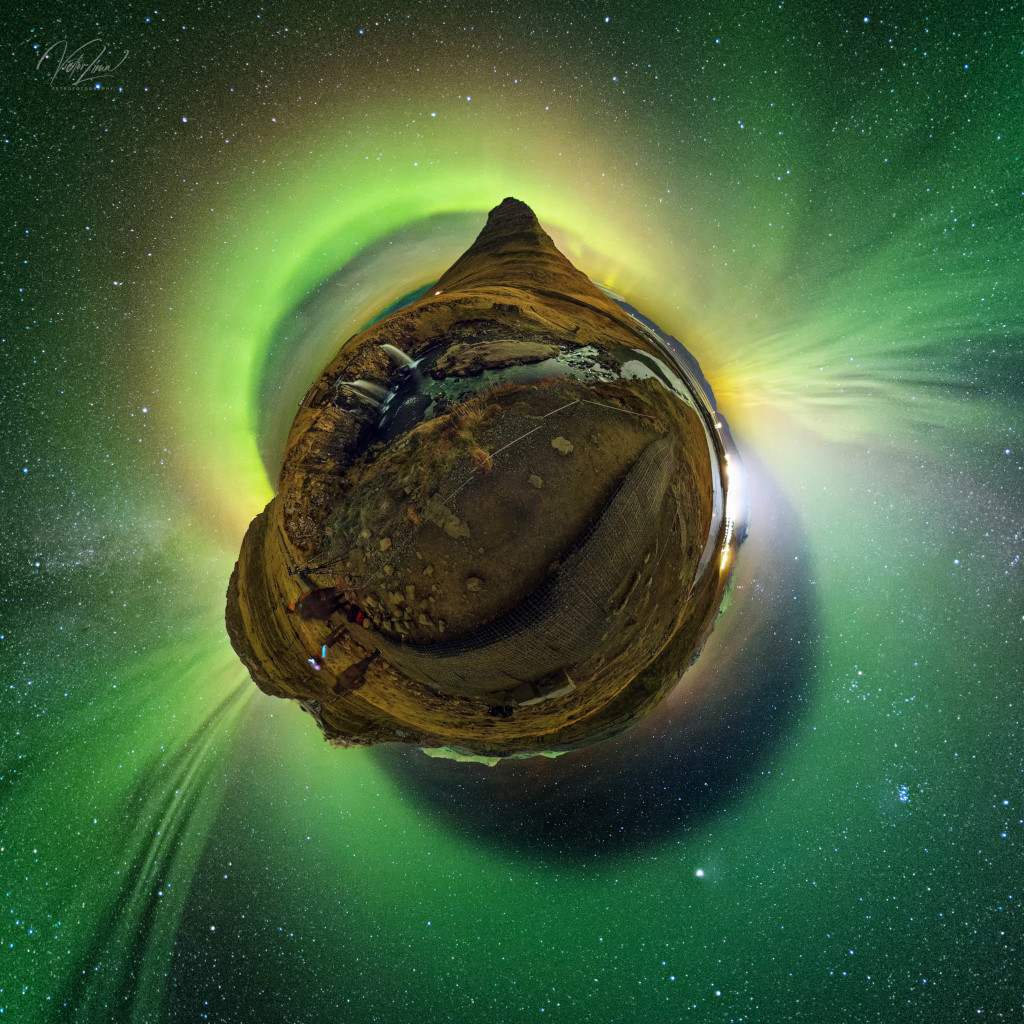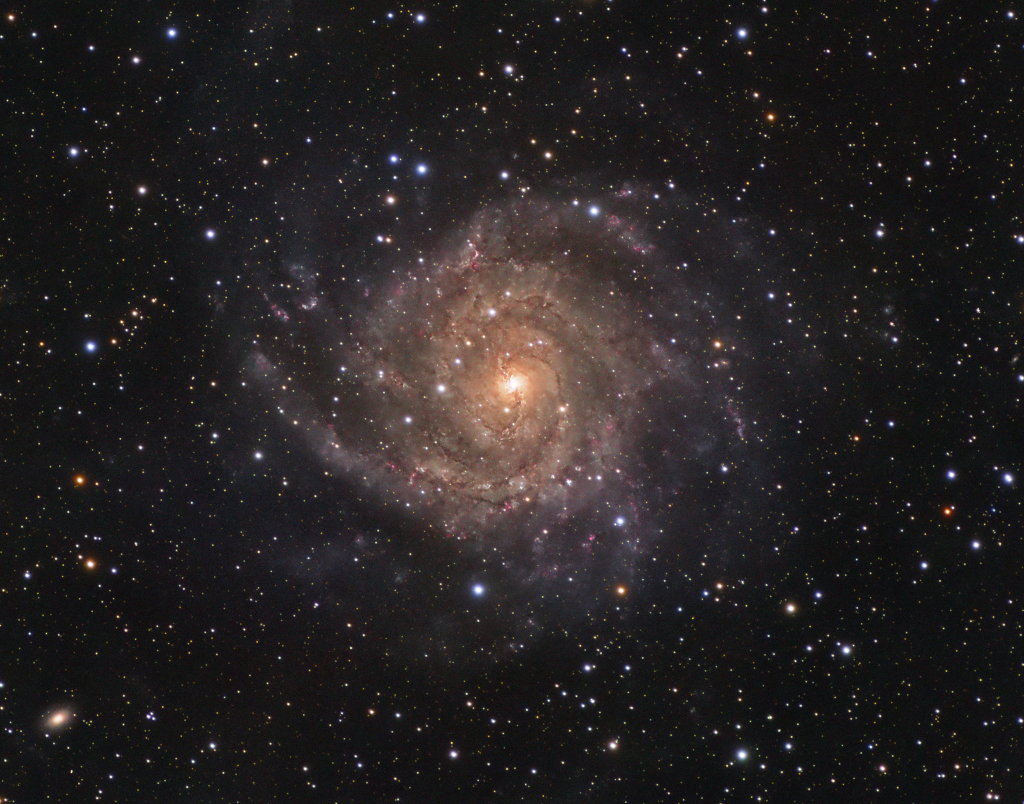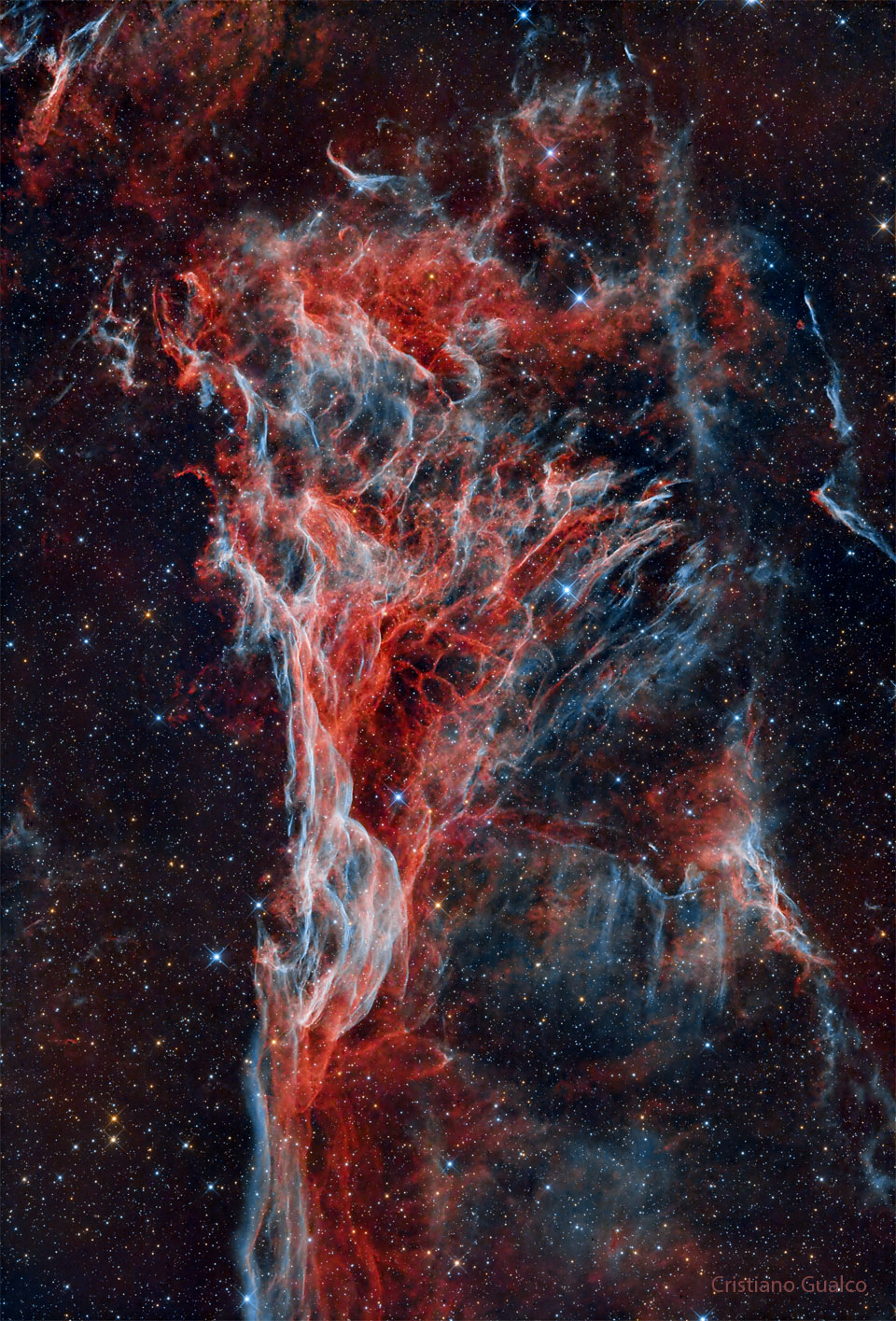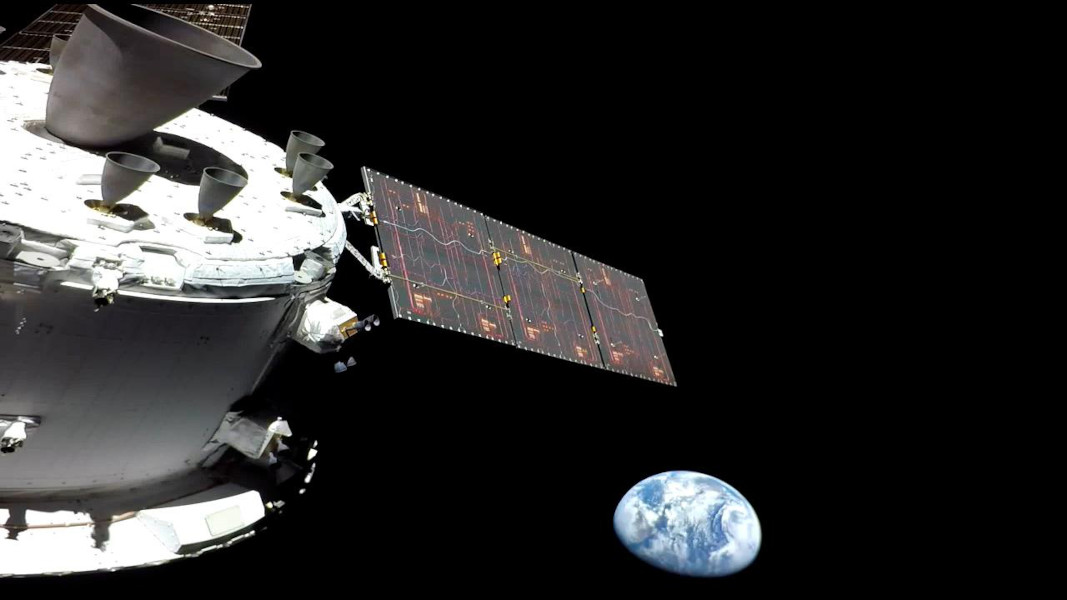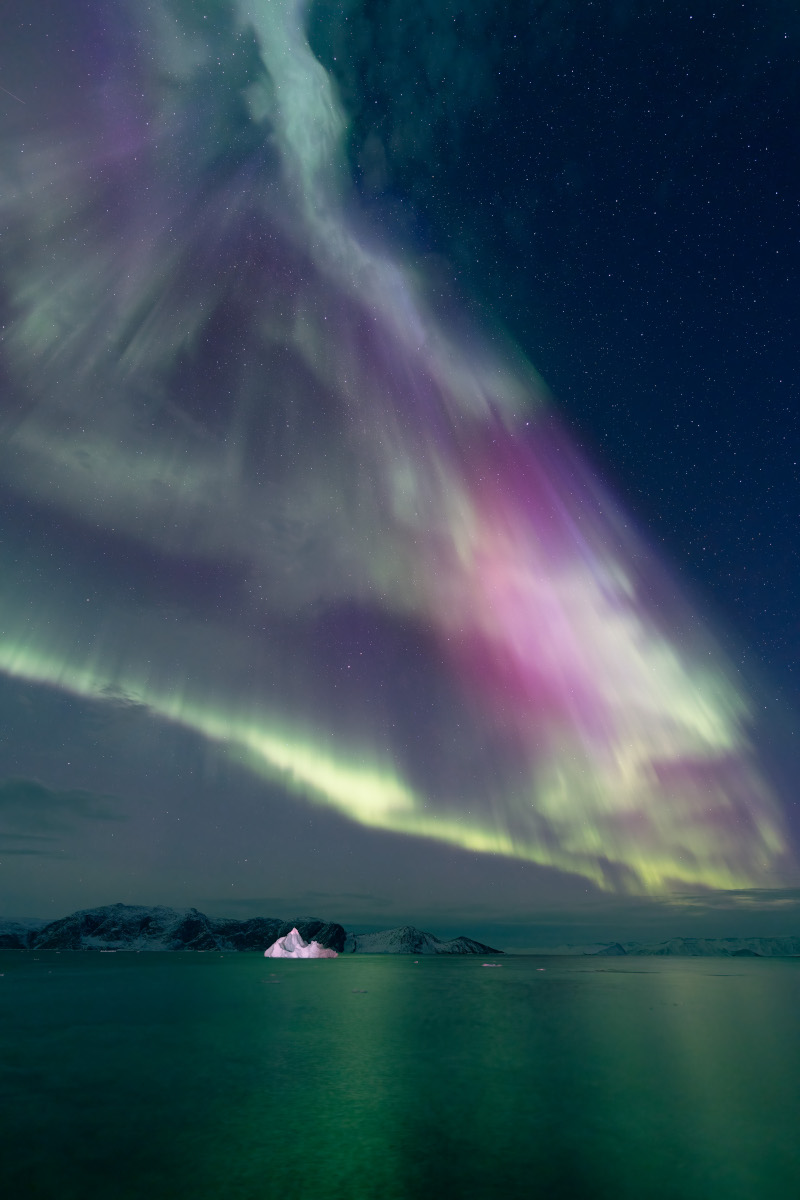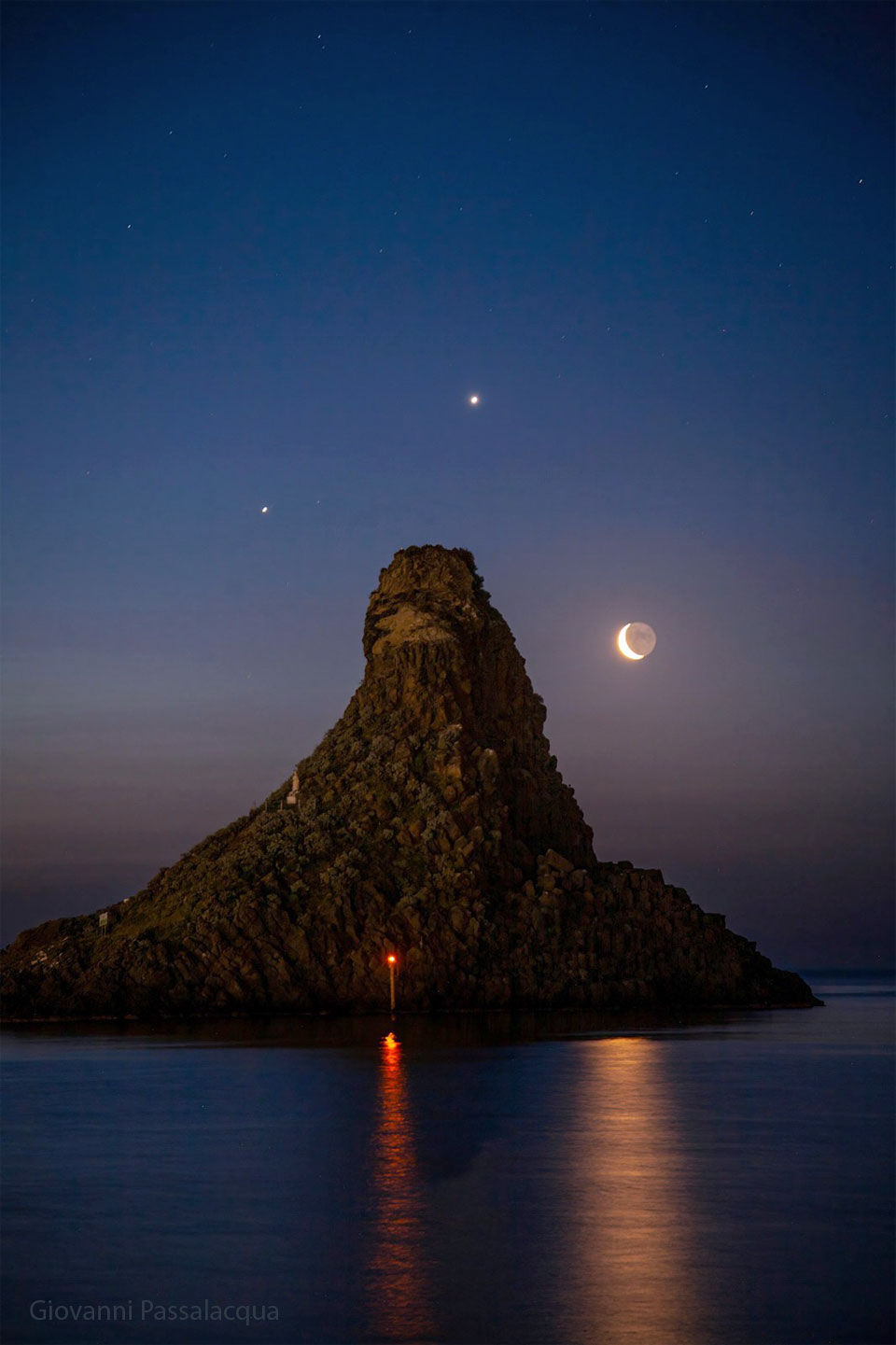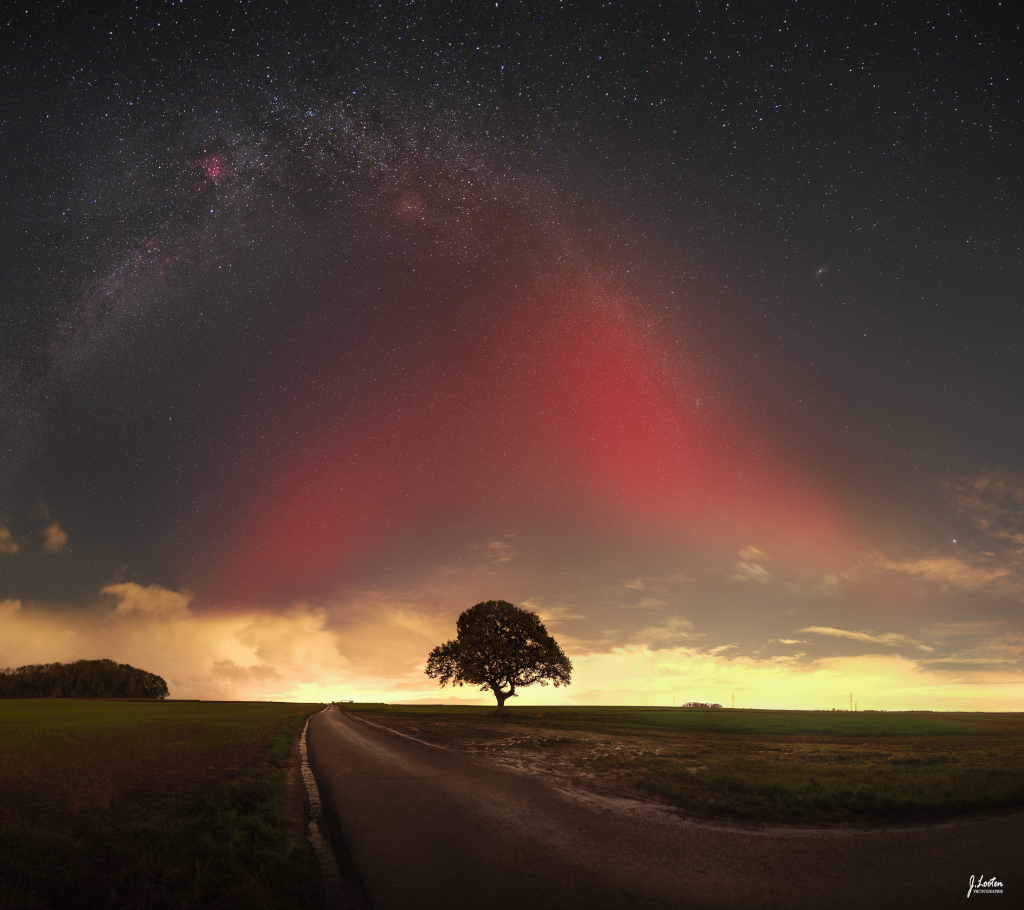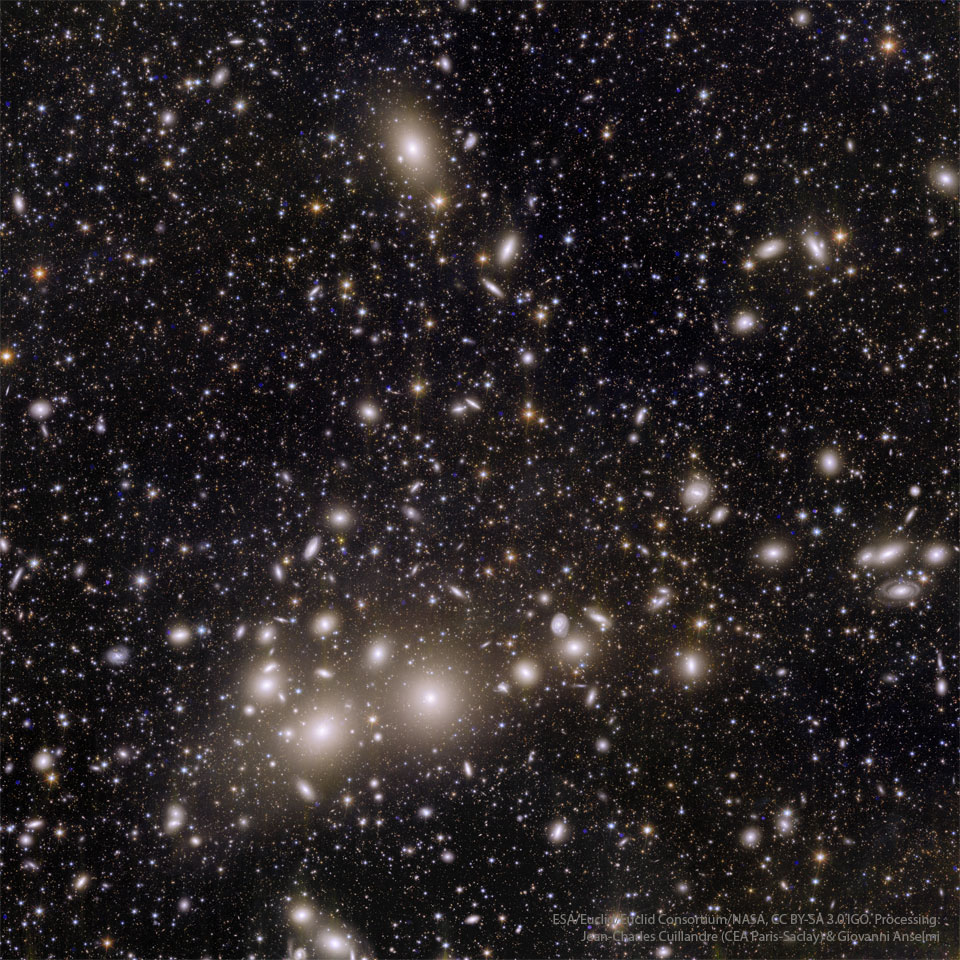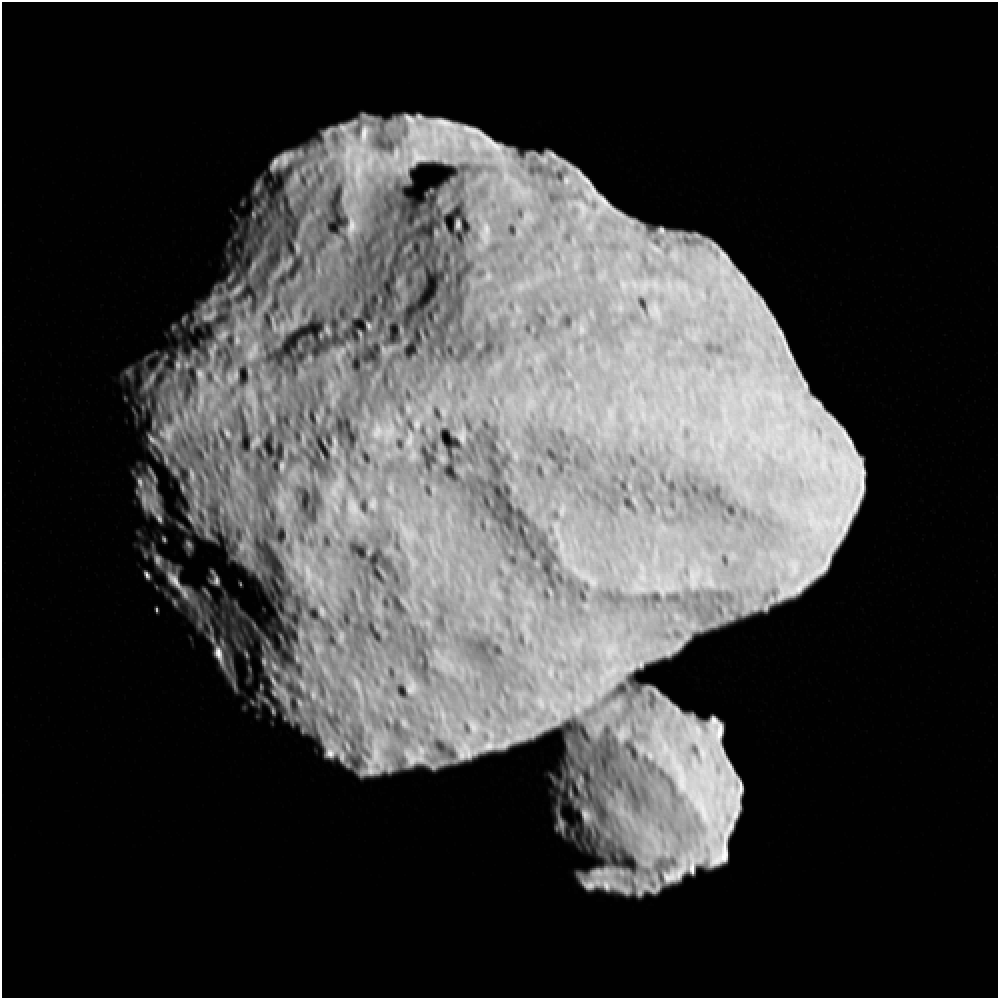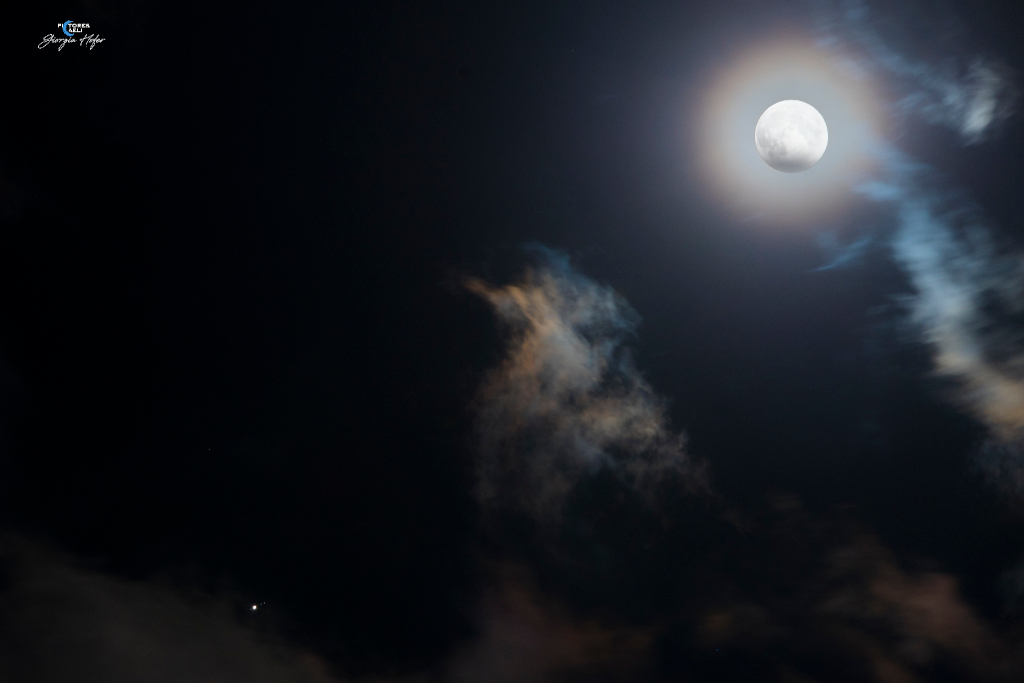2023 November 30
Image Credit: NASA, Artemis I
Explanation: On flight day 13 (November 28, 2022) of the Artemis I mission, the Orion spacecraft reached its maximum distance from its home world. Over 430,000 kilometers from Earth in a distant retrograde orbit, Orion surpassed the record for most distant spacecraft designed to carry humans. That record was previously set in 1970 during the Apollo 13 mission to the Moon. Both Earth and Moon are in the same field of view in this video frame from Orion on Artemis I mission flight day 13. The planet and its large natural satellite even appear about the same apparent size from the uncrewed spacecraft's perspective.



